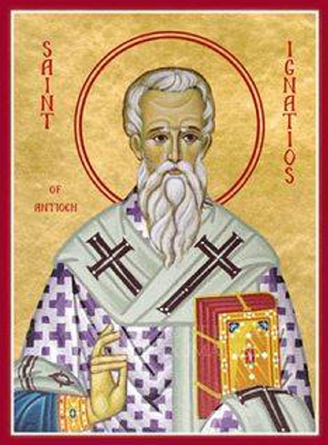AITAPE Diocese
Papua New Guinea is an emerging nation of more than 600 inhabited islands and 715 languages. The Catholic Diocese of Aitape is one of the earliest of the nineteen Catholic Church Dioceses of Papua New Guinea, in Oceania. The Diocese of Aitape covers an area of 13,117 km². The Diocese area is situated between Vanimo to the west and Wewak to the east. Majority of the people are subsistence hunters and gatherers who live in village communities. In 1881, Pope Leo XIII offered the Society of the Divine Word, SVD the missions of Eastern and Central New Guinea, which were first established on Tumeleo Island in what would become the Diocese of Aitape.
They arrived in Madang in August 1896 to establish the Prefecture Apostolic. A German plantation manager from Aitape chanced to be in Madang at that time and suggested the new mission start in Tumeleo Island, next to his plantation, where the climate was healthier. It took six weeks to move men and material to Tumeleo.

The efficient Germans had brought with them prefabricated buildings and 50 tonnes of cargo, but even so, there remained the daunting tasks of learning a new language, establishing relationships with the people and discovering their customs and beliefs. One of the most difficult challenges was to explain why they had come to Tumeleo. The missionaries started a school but had a hard time convincing the children to stay in class when the beach and the sea were far more attractive. By 1914 there were 68 missionaries and 6 new stations established along the coast. The Holy Spirit Sisters arrived in 1899, setting up schools, clinics and printing press. Tropical plants, cattles and horses were brought in from Java and catechetical training centres sent pastoral asssistants to new areas with spiritual and developmental change as their goal.
Tumeleo was too small and isolated to remain the center of an expending enterprise and Alexishafen, near Madang, became the Headquater with better communications and many facilities and training establishments. To help the mission be self- supporting, plantations, workshops, cattle farms, gardens, rice plots and sea transport were established to cut down dependence on foreign goods and services. This became especially important during the First World War when commerce stopped and restrictions were applied to German missionaries by the Australian administration. In 1920 New Guinea became a League of Nations mandated trust territory under Australia.
The First World War put an end to further expansion of the mission but the missionaries used this time to consolidate their work. Outstations and schools were opened around Wewak and Plantations were built up. After the War the two missionion territories of Eastern and Central New Guinea were formally divided and Fr. Joseph Loerks was appointed Prefect Apostolic of Central New Guinea. More missionaries arrived from Europe and expansion continued along the coast and inland. Catechist schools were seen as an important tool of evangelization and contact and the sisters were invaluable in teaching the young men.
The Perfecture became a Vicariate and Mgr. Loerks was ordained bishop in Germany. There were now two bishops in New Guinea heading a staff of over 200 male and female missionaries and the future looked bright. Then came war. The Japanese invaded in 1942, occupied Rabaul and went on to establish themselves on the mainland of New Guinea and the north coast of Papua. All European civilians except the missionaries, who chose to remain, were evacuated. Many missionaries were either killed or imprisoned by the Japanese forces and most of the facilities were destroyed. Catechists, like Blessed Peter To Rot and Magdalena of Tumeleo, continued the work of evangelization. Australia resumed control after the war until 16th September 1975, when Papua New Guinea became an independent country with a parliamentary system of government.
During 1946 some 18 priests and 14 brothers who had survived the war arrived back in the Sepik District from Australia and were joined by 16 Franciscans who moved to the Aitape and Vanimo Districts, manning some SVD stations and moving inland over the Torrecelli Mountains. The friars quickly consolidated and expanded their mission, which grew into the Vicariate and the Diocese of Aitape. Italian Franciscans expelled from China in 1952 continued their mission apostolate in Aitape. Franciscan Sisters joined the friars in 1949, followed over the next two decades by various congregations of Brothers and Sisters. In 1981 the Spiritans sent priests to assist the diocese.
The Catholic missionaries gave their lives to assist the people who were scattered in tiny semi-nomadic groups in a very difficult terrain. They crossed endless swamps, treacherous rivers and cruel limestone ridges. From the very beginning of the mission they cared for the spiritual, educational and health needs of the people.
Vicariate Apostolic 11 November 1956
Vanimo Separated 13 September 1963
Established as Diocese 15 November 1966
The diocese consists of the eastern part of Sandaun Province.
Statistics
Area: 13,117 km²
Civic Population: 199,000
Catholics: 166,789
Parishes: 32
Diocesan Priests: 10
Religious Priests: 10
Religious Brothers: 11
Women Religious: 31
Educational Services
The Elementary Schools – 183
Primary Schools – 65
Secondary Schools – 2
Technical Vocational Education & Training (TVET) – 3
NALU College of Distance Education – 1
Special Education School – 1
Health Services
Hospital: 1
Community Health Workers Training School: 1
Centre for Persons with Disabilities: 1
Sub Health Centers: 10
Aid-Posts: 2
List of the Ordinaries:
Bishop Ignatius DOGGETT OFM 1952 – 1969
Bishop William ROWELL OFM 1969 – 1986
Bishop Brian BARNES OFM 1987 – 1997
Bishop Austin CRAPP OFM 1999 – 2009
Bishop Otto SEPARY 2009 – 2019
Bishop Siby Mathew PEEDIKAYIL HGN 2021 –

